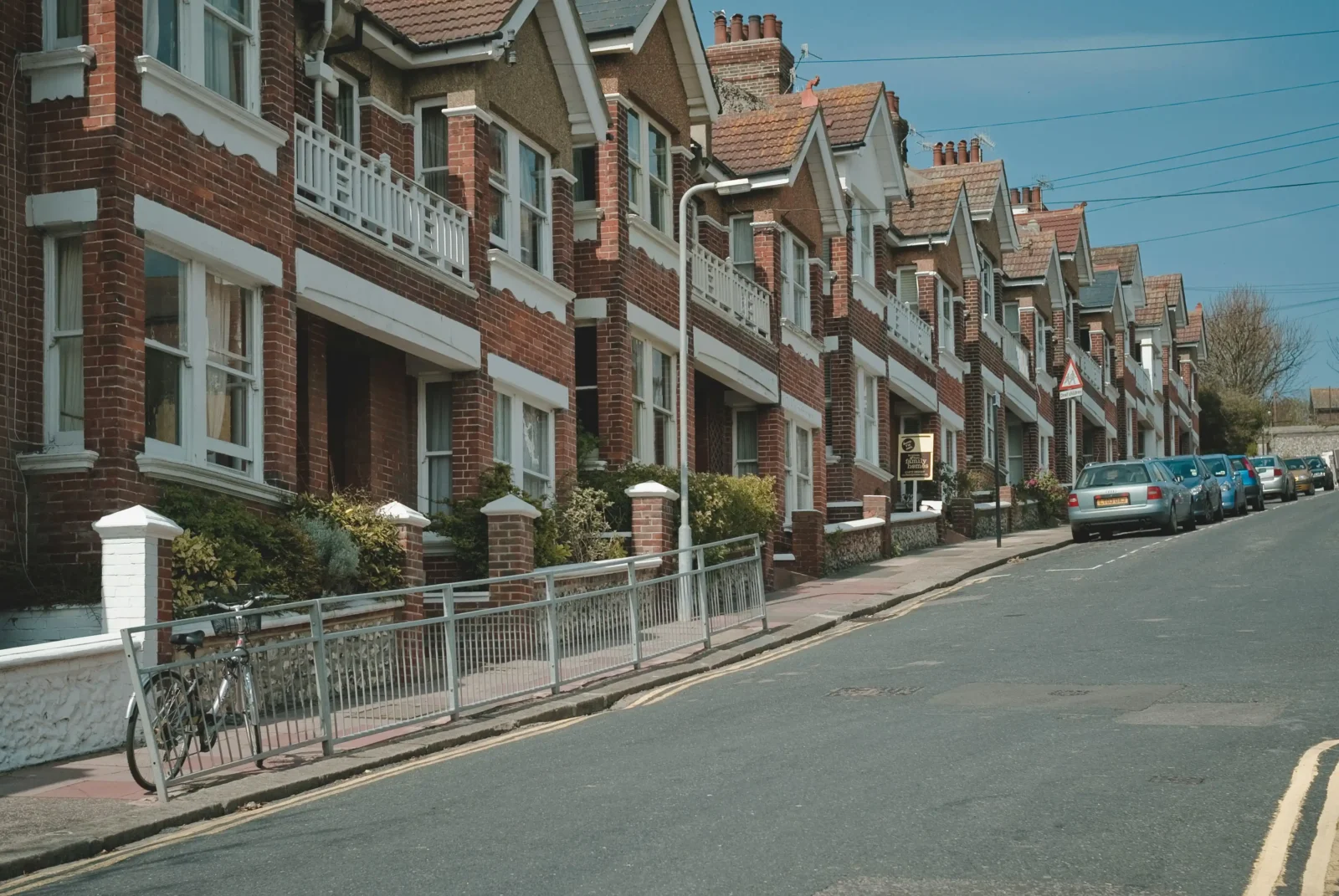- Home
- Articles
- Architectural Portfolio
- Architectral Presentation
- Inspirational Stories
- Architecture News
- Visualization
- BIM Industry
- Facade Design
- Parametric Design
- Career
- Landscape Architecture
- Construction
- Artificial Intelligence
- Sketching
- Design Softwares
- Diagrams
- Writing
- Architectural Tips
- Sustainability
- Courses
- Concept
- Technology
- History & Heritage
- Future of Architecture
- Guides & How-To
- Art & Culture
- Projects
- Interior Design
- Competitions
- Jobs
- Store
- Tools
- More
- Home
- Articles
- Architectural Portfolio
- Architectral Presentation
- Inspirational Stories
- Architecture News
- Visualization
- BIM Industry
- Facade Design
- Parametric Design
- Career
- Landscape Architecture
- Construction
- Artificial Intelligence
- Sketching
- Design Softwares
- Diagrams
- Writing
- Architectural Tips
- Sustainability
- Courses
- Concept
- Technology
- History & Heritage
- Future of Architecture
- Guides & How-To
- Art & Culture
- Projects
- Interior Design
- Competitions
- Jobs
- Store
- Tools
- More
The City of God, The Seat of Power: Vatican Urbanism and Control
Explore the fascinating interplay of urbanism and power in Vatican City in our latest article. Delve into the profound influence of architecture and planning, from the majestic St. Peter's Basilica to the tranquil Vatican Gardens, as they shape behavior and reinforce the Church's authority.

The Vatican, a city-state steeped in history and spirituality, offers a unique lens through which we can examine urbanism and control. As we explore the intricate relationship between the built environment and power dynamics within this sacred enclave, we uncover how architecture and planning reflect broader societal values and governance strategies.
From the majestic St. Peter’s Basilica to the meticulously organized streets, every element of Vatican urbanism serves a purpose beyond mere aesthetics. It’s a deliberate orchestration of space that influences behavior, fosters community, and upholds the authority of the Church. Join us as we delve into the fascinating interplay of faith, power, and urban design that shapes this iconic microcosm of the world.

Table of Contents
ToggleOverview of Vatican Urbanism
Vatican urbanism encompasses a blend of historical significance and intentional design that reflects the Church’s authority. Our examination focuses on the historical context and key principles that shape this unique environment.

Historical Context
Papal leadership has shaped Vatican City’s development since the 4th century. Monumental structures, like St. Peter’s Basilica, became focal points for religious and political authority. The Renaissance brought significant urban planning changes, transforming the Vatican into a central hub of spirituality and governance. Influential architects, including Bramante and Michelangelo, crafted designs that resonate with power, reinforcing the Church’s position within Rome. The 1929 Lateran Treaty further established Vatican City’s independent status, solidifying its architectural and political sovereignty.
Key Principles of Urban Design
Vatican urbanism relies on several core principles aimed at reinforcing control and enhancing spiritual experience:
- Symbolism: Architecture conveys theological significance. Structures, such as the obelisk in St. Peter’s Square, symbolize divine guidance and the Church’s lasting authority.
- Hierarchy: Urban layouts prioritize ceremonial pathways and monumental spaces. Grand avenues direct movement toward sacred sites, establishing clear spiritual hierarchies.
- Unity: Architectural coherence binds diverse structures. Uniformity in style promotes a harmonious aesthetic, creating a cohesive identity for the city-state.
- Accessibility: Design ensures ease of movement for pilgrims and visitors. Well-planned access points enhance the experience while encouraging participation in religious activities.
- Surveillance: Strategic vistas and spatial organization enable oversight. Design fosters an environment where control is inherent, enhancing the perception of safety and order.
By adhering to these principles, Vatican urbanism shapes the interactions and experiences within this influential city-state.
Mechanisms of Control in Vatican Urbanism
Vatican urbanism integrates various mechanisms of control that define its spatial and social dynamics. These mechanisms arise from political structures and religious influences, fundamentally shaping the environment we encounter.

Political Structures
Political structures within the Vatican exemplify a clear hierarchy that reinforces both governance and control. The Pope serves as the supreme authority, supported by the Curia, which manages administrative functions. Cardinals, archbishops, and bishops play vital roles in decision-making, creating a robust framework for authority. This hierarchy not only defines power relations but also affects urban design.
Centralized decision-making processes dictate land use, construction, and preservation of historical sites. Governance emphasizes control over urban planning initiatives and public access to sensitive areas. For instance, restricted zones around the Apostolic Palace ensure security while symbolizing the Church’s dominance. Decisions regarding urban development often reflect the Church’s political agenda, demonstrating the intersection of faith and authority.
Religious Influences
Religious influences profoundly shape Vatican urbanism and its mechanisms of control. Sacred architecture reflects theological values, guiding how we experience the space. Structures like St. Peter’s Basilica serve as physical manifestations of the Church’s beliefs, instilling a sense of reverence and authority.
Ceremonial pathways are designed to facilitate liturgical events, guiding visitors while reinforcing religious hierarchies. Iconography is strategically placed throughout the city, reminding us of the Church’s longstanding traditions and teachings. The layout of the Vatican encourages participation in religious practices, which fosters a communal identity.
Moreover, the incorporation of surveillance measures ensures orderly conduct during events and maintains the sanctity of the space. This environment fosters spiritual experiences while implying the Church’s oversight and influence over the faithful and visitors alike.
Case Studies
We explore two significant examples of Vatican urbanism: St. Peter’s Square and the Vatican Gardens. Each location exemplifies the Church’s influence over architectural design and control through urban planning.

St. Peter’s Square
St. Peter’s Square serves as the grand entrance to Vatican City, designed to evoke awe and reverence. Architect Gian Lorenzo Bernini implemented a colonnade system that symbolizes the welcoming embrace of the Church. The square accommodates significant gatherings, reinforcing the Pope’s authority through public appearances and ceremonies.
Symbolism plays a crucial role here. The central obelisk, brought from Heliopolis, presents a visual anchor, representing historical continuity and papal power over time. The layout directs visitor movement, promoting a sense of order and hierarchy. Events such as Easter Mass or papal audiences illustrate how the space operates not just as a gathering point but as a manifestation of spiritual and political control.
Vatican Gardens
The Vatican Gardens cover approximately half of Vatican City’s territory and represent an oasis of spirituality and tranquility amidst urbanity. Initially created in the 13th century, the gardens blend natural beauty with religious symbolism, showcasing a variety of flora and religious monuments.
The design promotes reflection and meditation, aligning with the Church’s mission to foster spiritual growth. Pathways within the gardens guide visitors, creating a controlled experience that emphasizes contemplation. The inclusion of chapels, fountains, and sculptures enhances the serene environment while reinforcing the Church’s presence.
Surveillance mechanisms exist subtly throughout the gardens, ensuring the safety and security of both spiritual and political figures. By integrating natural elements with religious significance, the Vatican Gardens exemplify the Church’s control through pastoral imagery and spiritual serenity.
Impacts of Vatican Urbanism on Society
Vatican urbanism significantly shapes societal dynamics, influencing social cohesion and cultural identity. Understanding these impacts reveals how the unique architecture and planning of the Vatican foster community and tradition.

Social Cohesion
Vatican urbanism promotes social cohesion by creating shared spaces that facilitate interaction and solidarity among visitors and residents. St. Peter’s Square acts as a communal hub, where thousands gather for religious events and public audiences. The design encourages collective participation and a sense of belonging, reinforcing the Church’s role in uniting diverse individuals under a common faith.
Architectural features such as the colonnades, designed by Gian Lorenzo Bernini, symbolize embrace and openness, welcoming visitors into a single, large community. Organized pathways lead to sacred sites, creating a seamless flow that encourages both individual reflection and communal gatherings. These elements foster a communal identity, reinforcing the idea of togetherness while enhancing the experience of worship and community events.
Cultural Identity
Vatican urbanism contributes to a distinct cultural identity that blends spirituality, history, and artistry. The strategic placement of monumental structures like St. Peter’s Basilica serves not only as religious landmarks but also as symbols of cultural heritage. These architectural elements reflect the Church’s narratives and values, shaping how both locals and visitors perceive their connection to broader historical contexts.
The Vatican Gardens exemplify this cultural identity by merging natural beauty with religious symbolism, creating a sanctuary of contemplation. Artworks and sculptures throughout the gardens promote historical continuity, enhancing the spiritual experience while paying homage to the Church’s artistic legacy. This interplay of architecture and nature fosters an environment where cultural practices and traditions flourish, reinforcing the Church’s role as a custodian of history and spirituality.
Conclusion
Vatican urbanism illustrates the intricate relationship between urban design and the exercise of control. Through historical context, we see how the planning and architecture of the Vatican evolved to serve both spiritual and political purposes. The influence of significant figures during the Renaissance set the stage for an urban layout that reinforces the Church’s authority.
Key principles of urban design, such as symbolism and hierarchy, shape the experiences of all who visit. The design of St. Peter’s Square and the Vatican Gardens demonstrates this influence clearly, each serving distinct yet complementary roles in expressing the Church’s control over public spaces. St. Peter’s Square functions as a communal gathering area, while the Vatican Gardens provide a sanctuary for reflection, both meticulously designed to foster particular behaviors among visitors.
The consequences of Vatican urbanism extend beyond physical structures. Its impact on social cohesion and cultural identity highlights how architectural elements promote community and tradition. Elements like Bernini’s colonnades in St. Peter’s Square symbolize openness and encourage interaction. The carefully organized pathways leading to sacred sites enhance spiritual and communal experiences, reinforcing a sense of belonging within the religious mission of the Church.
Overall, Vatican urbanism serves as a powerful demonstration of how architecture and urban planning can shape not just spaces, but also identities and experiences, firmly intertwining the realms of faith and governance.
- City of God Vatican
- Papal urban design
- Seat of Power Vatican
- Vatican and urban control
- Vatican authority in urbanism
- Vatican City architecture
- Vatican city development
- Vatican City infrastructure
- Vatican city planning
- Vatican control city planning
- Vatican governance architecture
- Vatican urban planning
- Vatican urban studies
- Vatican urbanism
I create and manage digital content for architecture-focused platforms, specializing in blog writing, short-form video editing, visual content production, and social media coordination. With a strong background in project and team management, I bring structure and creativity to every stage of content production. My skills in marketing, visual design, and strategic planning enable me to deliver impactful, brand-aligned results.
Submit your architectural projects
Follow these steps for submission your project. Submission FormLatest Posts
Online 3D Terrain Mapping Tools for Urban and Landscape Design in 2025
A curated guide to the best online 3D terrain mapping tools in...
10 Interesting Facts About Zaha Hadid
Zaha Hadid was a visionary architect whose fluid forms, bold experimentation, and...
Common Emergency Repairs Every Homeowner Should Be Ready For
For most of us, when something goes wrong, we have a propensity...
Designing, Retrofitting, and Valuing Non-Standard Homes in Britain
Britain’s housing stock carries a quiet contradiction. From the street, many homes...












Leave a comment